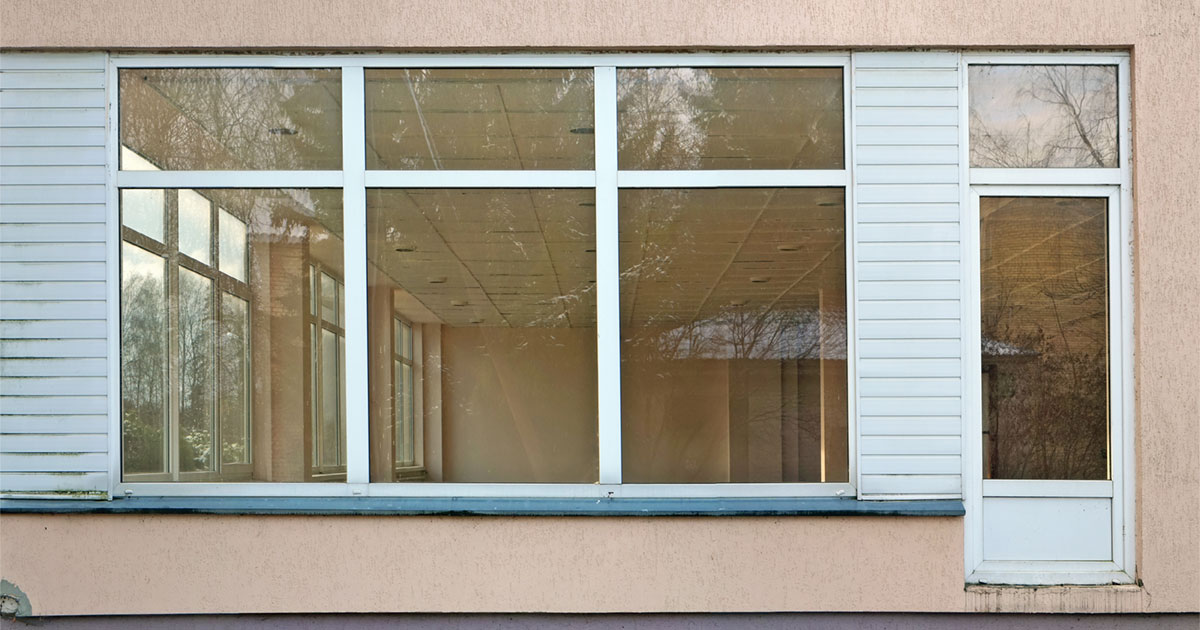SIX STEPS THAT SHOULD BE TAKEN BEFORE CONVERTING A FORMER DRYCLEANING PROPERTY INTO A RENTAL PROPERTY

BY: MORGAN SALTSGIVER
Across the country, a wave of small and independent drycleaning business owners are shutting their doors to retire or start new careers in response to a volatile economic landscape. Some rented their properties and are now leaving property owners and real estate investors scrambling to fill those vacancies and protect their investments. The fact that drycleaning properties have a history of environmental contamination paired with the quickly dwindling demand for drycleaning services means these properties will likely need to be retrofitted for use by a non-drycleaning business.
Preparing your commercial property for a life after drycleaning is a complex process. There are physical updates that need to be made, potential environmental liabilities that need to be assessed, and legal obligations that need to be upheld. But it is all worth it to ensure that the property remains active, and cash continues to flow into your pocket. Here are the six steps you should do as a commercial property owner before leasing your former drycleaning property to a non-drycleaning tenant.
STEP ONE: DECOMMISSION THE DRYCLEANING EQUIPMENT
Decommissioning drycleaning equipment is something the drycleaner is obligated to take care of, so we won’t go too far into the details. However, there are a few things that a property owner can do to help facilitate and make this a smooth and mutually beneficial procedure.
- Help the drycleaner plan the route their equipment will take to the outside of the building, and make sure the equipment can fit through doors or openings
- If it can’t fit, arrange for windows to be removed in order to move the equipment outside
- Coordinate a moving schedule with the drycleaner, and rope off parking spots for the drycleaner to stage their equipment as it comes out of the building
- Make sure all solvent, waste, carbon and filtration have been removed from the drycleaning machine before it’s transported
- Make sure refrigerant has been evacuated from the chillers
- If the drycleaners’ boilers have mercury switches, make sure they’ve been removed and properly disposed of
- Make sure that all remaining chemicals are safely disposed of by consulting with your Material Safety Data Sheets (MSDS) or an environmental consulting firm
As the landlord, you will have the ultimate say on the moving schedule and the precise conditions the property should be in when the tenant hands over the keys. Be sure to communicate these parameters in your lease agreements, so everyone is on the same page, and you can avoid any legal ramifications.
Read this blog post to plan your drycleaner decommissioning
STEP TWO: ADDRESS ANY STRUCTURAL CONCERNS THAT COULD CAUSE INDOOR AIR QUALITY CONCERNS
Making sure the air inside the building is safe to breathe is the single most important step in this process. Former drycleaning plants almost always test higher in Perc concentration than the extremely low vapor intrusion screening level that non-drycleaning businesses like retail clothing stores or ice cream shops must abide by. While vapor intrusion is a common cause of this spike, it is possible that other conditions are at play.
Certain building materials can off-gas Perc vapors and cause high concentration levels during air sampling. The most common example of this is the concrete floor and walls around the area where the drycleaning machine was housed. Over the years, the concrete becomes saturated with Perc, and even if it doesn’t make it to the subsurface, it can still release vapors for a very long time. Other building materials can also cause indoor air problems. Drywall, insulation, and ceiling tiles are all porous materials that can trap Perc vapors during active operations and slowly release them over time. It is for these reasons that you should remove any drywall, insulation, and drop-ceiling tiles that were present during drycleaning operations, and seal floors and walls with a vapor barrier product designed to stop off-gassing before a new tenant moves in.
Another common structural problem that leads to higher Perc concentrations are the floor drains. If separator water, floor wash water, or small spills of Perc were ever routed to the sanitary sewer floor drains, the vapors can return over time. Most floor drains are equipped with P-traps that are designed to create a vapor seal using the water that is poured into them. However, if these drains don’t get used and the water inside the P-traps dries up, vapors can seep back into the room. It’s recommended that these drains are used frequently to keep the water seal intact. Other options include installing one-way vapor lock valves for the drains or sealing them up altogether.
STEP THREE: EVALUATE THE POTENTIAL THAT A RELEASE COULD HAVE OCCURRED
After the drycleaning equipment is moved out, and all structural issues that may cause indoor air quality concerns are addressed, it’s time to figure out if there are any larger underlying environmental problems. This can be kickstarted through a Phase I Environmental Site Assessment (ESA). During a Phase I, a consultant will review the history of a property to determine past use and regulatory records for the site and surrounding properties, conduct a site walk, and interview site contacts and local agencies to decide whether there are any outstanding liabilities on the property. A Phase I ESA done through ASTM standards also satisfies what is known as the Bona Fide Purchaser Protection (BFPP) which provides some legal protection from environmental liability to a future property owner or future tenant.
STEP FOUR: CONDUCT INSURANCE ARCHEOLOGY
Sometimes a more thorough investigation of an underlying environmental problem is called for, and when that happens, we recommend starting the insurance archeology process as quickly as possible to see if you’re covered. Environmental investigation and remediation services–especially at properties that have a history of Perc use–can be pricey, and even one found policy can potentially offset a significant amount of the cost.
See what kind of environmental services historical CGL policies can help pay for
Even if you can’t find the actual policy, a trained insurance archeologist can use evidence like an old receipt, canceled check, or piece of mail to prove that coverage existed at one time or another. Another piece of good news for landlords is they can use the old tenant’s insurance coverage as well as their own. Every previous drycleaning operation is considered a Potentially Responsible Party (PRP) to the contamination and therefore is legally obligated to pay for part of the cleanup. The sooner you get in touch with an insurance archeologist like the ones at PolicyFind, the sooner you can start compiling evidence of coverage, searching for other PRPs to share in the cost, and tender claims to insurance to pay for the necessary environmental services.
STEP FIVE: PERFORM STEPS NECESSARY TO SATISFY CONTINUING OBLIGATIONS
In order to continue to benefit from the BFPP liability protection that a Phase I ESA provides, a property owner has a continuing obligation to manage any pre-existing contamination and protect tenants and occupants from exposure to a release. These requirements include:
- Compliance with land use restrictions;
- Taking reasonable steps to manage releases;
- Providing full cooperation/access/assistance to regulators overseeing the property;
- Compliance with information requests and administrative subpoenas;
- Not impeding performance of response actions;
- Not causing or contributing to contamination.
Although there is a lot of maintenance involved in this step, it will work to your advantage as the property owner to have that legal protection and be able to promote a safe property to future tenants.
STEP SIX: COMMUNICATE RESULTS OF EVALUATION AND CONTINUING OBLIGATION REQUIREMENTS WITH FUTURE TENANTS
The BFPP liability protection is extended to tenants through the BUILD Act of 2018, so keeping up on those continuing obligations can and should be a team effort. Be open and transparent with future tenants and make sure there are parameters regarding those continuing obligations written out in the leasing agreement. We’ve seen some very messy tenant/owner lawsuits when there is no BFPP protection and no defined liability in the terms of the lease. And, if a tenant is not aware of this existing protection, and they mess up the continuing obligations by causing or contributing to a release, or exacerbating an existing release, legal battles could ensue.
Preparing your property for a life after the drycleaning operation is a long and sometimes tedious one, but it will be worth the effort to make sure the property can operate safely and stand up to regulatory scrutiny. With the drycleaning community shrinking year by year, it will make a huge difference in your property management portfolio if the property can operate as something other than a drycleaner.
Contact us today to learn how we can help you assess and manage environmental liabilities on all of your commercial properties.
 Morgan Saltsgiver Morgan Saltsgiver is a Licensed Professional Geologist (LPG, PG) with sixteen years of experience in the environmental industry specializing in providing Agribusiness, Brownfields development, and traditional environmental consulting services to her clients. Her educational background in geology provides a strong basis for geological and hydrogeological interpretations of contaminant migration through subsurface media and the development of conceptual site models used to develop the path forward towards closure for each project site. She assists her clients with finding and using alternative funding sources for their environmental issues, including historical insurance policies, federal and local Brownfields grants, and state trust funds.
Morgan Saltsgiver Morgan Saltsgiver is a Licensed Professional Geologist (LPG, PG) with sixteen years of experience in the environmental industry specializing in providing Agribusiness, Brownfields development, and traditional environmental consulting services to her clients. Her educational background in geology provides a strong basis for geological and hydrogeological interpretations of contaminant migration through subsurface media and the development of conceptual site models used to develop the path forward towards closure for each project site. She assists her clients with finding and using alternative funding sources for their environmental issues, including historical insurance policies, federal and local Brownfields grants, and state trust funds.



